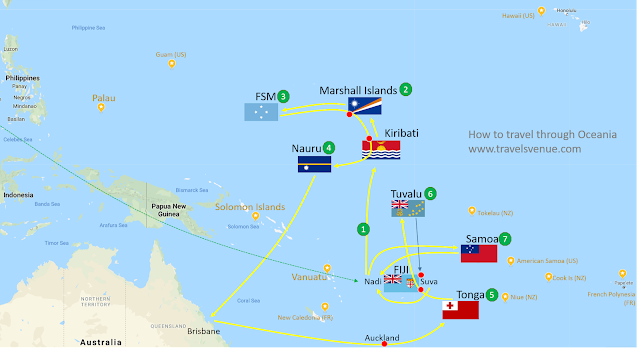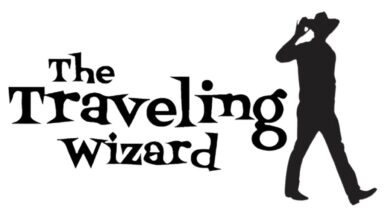As I’ve creeping slowly towards my goal of visiting every country in the world, I’ve hit a few snags. First, there’s the nearly impossible countries. North Korea is the biggest challenge that most think of, but politically, it’s the only country that US passport holders aren’t allowed to visit.
US relations with Libya, Syria, Venezuela and Afghanistan aren’t exactly buddy-buddy, so there’s problems when it comes to trying to get a visa. Next, there’s the dangerous group of countries that currently are at war, have political coups or sponsor terrorism. Yet surprisingly enough, there are still ways to navigate each of these countries on a case-by-case basis. Intrepid travelers still somehow manage to get to the most difficult places by being persistent, trying embassies in less popular countries or just getting lucky and finding someone who is sympathetic to their goals. As far as “dangerous countries” go, the danger usually lies in certain areas that travelers should avoid, not the entire country.

Then there’s the South Pacific. Over a dozen countries scattered throughout the world’s largest ocean with thousands of miles separating them makes a visit challenging enough. The lack of demand for flights due to small populations and the astronomical fuel costs make island hopping a possibility for only a few. Some of the more popular islands are fairly accessible. Fiji, Hawaii and Tahiti welcome millions of visitors a year with solid tourist infrastructures as well as being convenient stopovers between North America and Australia. There are transpacific cruises that visit spots in Papua New Guinea, Vanuatu and Fiji, but beyond that, the only ships that are docking in Tonga or Samoa are limited to those with a lot of time and money.
In my travels I’ve visited Fiji, Tahiti, Hawaii, Vanuatu, Papua New Guinea without spending a fortune doing it. Fiji Airways has deals and I’ve found some good bargains from Brisbane, Australia. However, my nine remaining island countries are some of my biggest travel challenges. I’ve looked at United’s Island hopper which visits Micronesia and Marshall Islands via Guam. I’ve looked at flights from Hawaii, Los Angeles and San Francisco. I’ve tried booking from Manila, Tokyo and even directly from my hometown of Houston. Many websites won’t even show flights available to some of these destinations. I finally got a search engine to produce a Houston to Tonga price and the price was equivalent to 4 round trip tickets to Europe. The cost displayed $2900 round trip for January travel. Let’s do the math. One island with a 40-hour trip each way for the same price as a used car? I rolled up my sleeves and started working on possible hacks. Could I get it cheaper? Could I visit some other countries on my list? At first it seemed impossible, but then the internet clouds slowly began to part.
The secret to visiting multiple destinations in this region i found lies in using two tools. First, looking at the maps of the carriers that fly to this part of the world and second, deciding on the best hub(s), which will be closest to the destinations chosen. Nauru Airlines, Qantas, Fiji Airways and United all service the Pacific, but Fiji has its hub in Nadi and it runs flights to 5 of the countries on my list. In some cases, a flight might continue from its origin and stop at multiple islands before reaching its final destination, as in the United Hopper. In the case of Fiji airways, each island itself is the end destination, except for the segment between Honolulu and Fiji, which have stops in Samoa and Kiribati. It would make sense that we might be able to save money if we can continue using the normal routes the airline flies and taking advantage of the stopovers. In other words, stopping in Samoa on the way to Fiji from Honolulu should cost less than doing a roundtrip from Fiji. If one could figure out the schedule, there’s a possibility of a stopover in Kiribati on the return flight. As you can see from the map, flying from LAX doesn’t give us that option. So, after plugging in the prices and determining this is the most economical choice, we’ve found our first hub, Honolulu.
Fiji Airways Map
Before I looked at the Fiji Airways map, I was just plugging in random islands and hoping for the best. I soon discovered that I would be paying a lot extra for a round trip to Samoa from Fiji and other flights included stopovers in Auckland and Brisbane with high prices to match. This is because Fiji doesn’t offer direct flights daily, so if you want to fly on a certain day, you might end up in New Zealand or Australia on a 35 hour flight. I solved this by pulling up my Skyscanner app, entering the approximate dates I’d like to be in Tonga, for example, then moving my arrival and departure days up and down, until I eventually found a direct flight. It turns out that most of these flights to these islands are weekly, so if I want the lower fare, I need to fly in and out on the days the airlines service the destination. After determining the most direct and cheapest flights, I created a schedule. I needed to book a flight to Los Angeles from Houston, then Honolulu, then Samoa, Fiji, Solomon Islands, Tonga, Kiribati and then back to Houston through Honolulu via LAX. It gets a little complicated because there are only certain days to choose, and you must be careful to allow enough time for connections or possible delays. If you miss a flight, you might have to wait a week to get the next one.

In the end it comes down to the time vs money. If you’re not in a rush, you can take advantage of a low fare and stay a few more days on a tropical island vs trying to rush back on a more expensive ticket. If you’ve got tons of frequent flyer miles or lots of cash to spend, you don’t really need this advice.

Another question you might ask is why am I flying to LA? Why not directly to Hawaii? It comes down to a few reasons: price, branding and the possibility of adding another adventure. The $200 I save by flying Spirit to LA, then Hawaiian to Honolulu can be spent on something more interesting. I’m parlaying it into a visit to Catalina Island, which has always eluded me on previous stopovers. Also Houston departures are usually limited to United or American airlines. LAX has a slightly cheaper option with Hawaiian Airlines. United flights have a generic experience. Hawaiian Airlines makes you feel like you’re going to Hawaii. Finally, I have ultimate control over my stopovers. Houston will most assuredly have a stopover in San Francisco, LAX and/or some other city with a layover time chosen by a computer. No thanks Skynet.
I’m also able to fly into Honolulu and then return from Kona. To book this, I use the multiple destinations option and book it as two separate segments. It’s the same price for the round trip ticket and only $50 for a flight to Kona. So, I get to visit the big island for only $50 more! Score!
As I mentioned before, I note the days each flight goes, create a schedule around the map/dates and then double check that I’ve got a little wiggle room in case a flight is late. Some South Pacific carriers don’t attach the same value to punctuality as, say an airline flying a competitive route may.
Here’s the final itinerary:
- Houston-Los Angeles Spirit Airlines
- Los Angeles- Samoa (Fiji Airways)
- Samoa-American Samoa (RT) (Tolofa Airlines)
- Samoa-Fiji (Fiji Airways)
- Fiji-Solomon Islands (Air Niugini)
- Solomon Islands-Fiji (Air Niugini)
- Fiji-Tonga (Fiji Airways)
- Tonga-Fiji (Fiji Airways)
- Fiji-Kiribati (Fiji Airways)
- Kiribati-Honolulu (Fiji Airways)
- Honolulu-Kona (Hawaiian Airlines)
- Kona-Los Angeles (Hawaiian Airlines)
- Los Angeles-Houston (Spirit)
All my flights combined are around $2400. Plugging in random dates for just a portion of these flights (all wouldn’t fit into the app) returned prices of over $10,000. Timing is everything when it comes to this part of the world.






